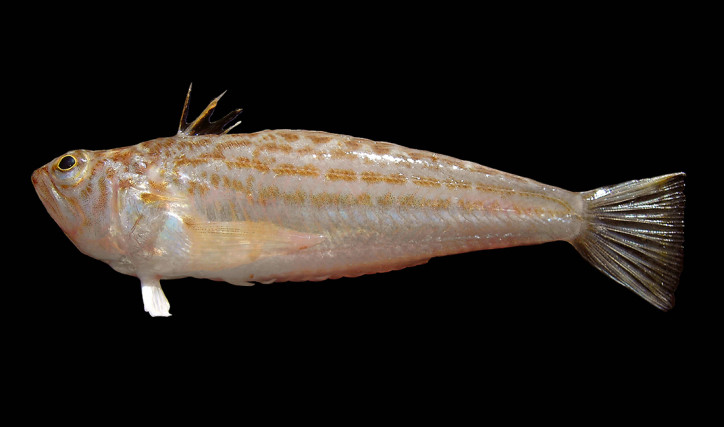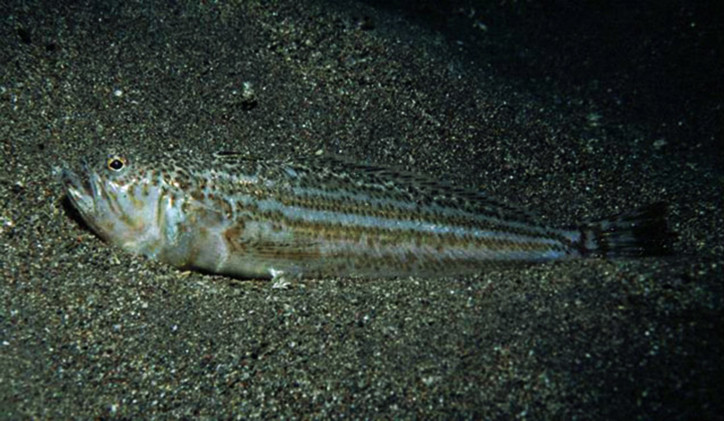Fish of the Echiichthys genus of the Trachinidae (weevers or weeverfish) family of the Trachiniformes order of the Percomorpha clade of the Acanthopterygii superorder.

(Lesser weever. Photo by © Hans Hillewaert. flickr.com/photos/bathyporeia)
Lesser weever (Echiichthys vipera) was first described in 1810 by the French naturalist Antoine Risso (1777-1845).
It inhabits the depth of 1-150 meters, sinks to depths in winter. It dwells near a sandy, silty and pebble bottom. The maximum recorded length is 15 cm, specimens up to 10 cm long are more common. It feeds on worms, crustaceans, mollusks, and small fish.

(Lesser weever. Photo by © Peter Wirtz. fishbase.org)
It is a permanent inhabitant of the Adriatic Sea.
There are venom glands in the first dorsal fin and gill covers. When one pricks at the spines of the fin or gill covers, the venom, which acts both as a neurotoxin and as a haemotoxin, gets into the blood, causes swelling in the area of the prick, and can cause tissue necrosis as well. Afterward, symptoms of general intoxication, including headache, chest pains, irregular breathing, may occur. Limb paralysis and loss of speech may occur as well. The spines of the fin and gill covers of dead fish are as dangerous as those of live fish. Extremely careful handling is required!
Moreover, the habitats of fish pose danger – they are often found near public beaches, hiding in the sand, with an only head sticking out.
The venom of weevers is thermolabile; heat treatment makes it disintegrate.
Names of lesser weever (Echiichthys vipera) in other languages as follows:
Ranxha viper (Albanian), Kleine pieterman (Dutch), Μικροδράκαινα (Mikrodrakena) (Greek), Salvariego (Spanish), Tracina vipera (Italian), Viperqueise (German), Ostrosz wipera (Polish), Peixe-aranha-comum (Portuguese), Малый морской дракончик (Malyj morskoj drakonchik) (Russian), Pauk žuti, Pauk žutac (Serbian, Croatian), Varsam balığı (Turkish), Petite vive (French).